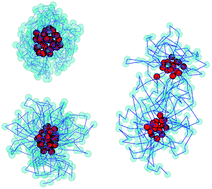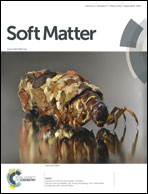Combined collapse by bridging and self-adhesion in a prototypical polymer model inspired by the bacterial nucleoid
Abstract
Recent experimental results suggest that the E. coli chromosome feels a self-attracting interaction of osmotic origin, and is condensed in foci by bridging interactions. Motivated by these findings, we explore a generic modeling framework combining solely these two ingredients, in order to characterize their joint effects. Specifically, we study a simple polymer physics computational model with weak ubiquitous short-ranged self attraction and stronger sparse bridging interactions. Combining theoretical arguments and simulations, we study the general phenomenology of polymer collapse induced by these dual contributions, in the case of regularly spaced bridging. Our results distinguish a regime of classical Flory-like coil–globule collapse dictated by the interplay of excluded volume and attractive energy and a switch-like collapse where bridging interactions compete with entropy loss terms from the looped arms of a star-like rosette. Additionally, we show that bridging can induce stable compartmentalized domains. In these configurations, different “cores” of bridging proteins are kept separated by star-like polymer loops in an entropically favorable multi-domain configuration, with a mechanism that parallels micellar polysoaps. Such compartmentalized domains are stable, and do not need any intra-specific interactions driving their segregation. Domains can be stable also in the presence of uniform attraction, as long as the uniform collapse is above its theta point.


 Please wait while we load your content...
Please wait while we load your content...